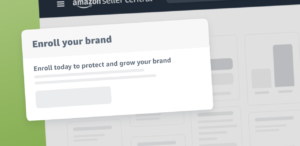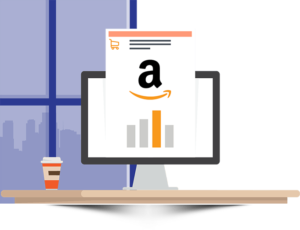
Unlocking Amazon Success: Mastering Total ACOS Optimization
Introduction: In the dynamic realm of Amazon advertising, success hinges on mastering key metrics, and
You have a lot of options when it comes to sourcing products for your eCommerce business. You might craft items by hand, or work with a manufacturer or white label producer to make custom goods. If you want to purchase products in bulk to resell for a profit, wholesale might be for you.
Wholesale sourcing is where a business purchases products in bulk at a discount from a wholesale supplier. The seller can then repackage the products and sell them to customers for a profit.
The process of finding the right wholesalers for your business can be overwhelming. In this post, we’ll explain what wholesalers do, how to find wholesalers, and what to look for before you place your first order. We’ll also cover how to buy wholesale products and sell them successfully in Amazon stores.
A wholesaler is a supply company that acts as a middleman between manufacturers and sellers. A wholesale license allows them to buy products in bulk from manufacturers at a discount and sell them to business owners at a slight markup. A wholesaler doesn’t typically sell products directly to the end consumers.
Sellers who list products in Amazon’s stores have the option to source products through third-party wholesale suppliers that do not currently sell in Amazon stores. Note that selling products you procure from auctions or that are considered unsellable, such as damaged goods intended for destruction or disposal from retailers or manufacturers, is prohibited.
There are two types of unsellable products – those damaged by customers or internally.
Customer returns are products returned by customers or carriers for various reasons. Upon arrival, items are graded to determine their level of damage and sellability.
Here are the customer returns considered unsellable, based on their grade level:
Internal Unsellable includes inventory that was damaged before it could be shipped to customers, making it unsellable, such as:
Interested in selling bulk items at a wholesale discount in the Amazon store? Learn about the Amazon Business program.
You can purchase products in bulk from wholesalers and sell them directly to consumers in the Amazon store. This approach allows you to source products at discounted prices, and then sell to end consumers at a higher retail rate, allowing for potential profit margins. By purchasing in larger quantities, you can also take advantage of volume discounts and lower per-unit costs, maximizing your potential profit margins.
To successfully source wholesale, be sure to comply with applicable laws and regulations, and also familiarize yourself with Amazon’s requirements for this selling method. Here are steps you can take, plus some best practices along the way.
How can you find out if the products and product categories you’re interested in selling will be profitable? Be sure to research to see if your product ideas are viable.
One tool you can use to find products you can source from wholesalers is Product Opportunity Explorer. Try it out to identify trending items and categories based on search volume and sales.
Some products and categories require approval before you can sell them in Amazon stores. Use the Compliance Reference portal on Seller Central to identify the required documents for categories and products that you need approval to sell. You can also look up items by keyword or product type.
One way to find suppliers is to first narrow down what you want to sell. Then, research supply companies that offer those products. Going to trade shows, asking for referrals, and joining professional networks are three examples of conventional ways to connect with suppliers.
Build relationships with brands to establish reliable sources. Here are some tactics you can try as you search for reputable wholesalers offering products at competitive prices:
You’ll also want to check to make sure suppliers can comply with Amazon’s dropshipping policy.
Once you’ve found suitable wholesalers, place a small order of the desired products before purchasing larger bulk orders. This allows you to test the supplier’s product quality and shipping speed. Plus, it provides the invoice you’ll need if you want to get approval to sell items in Amazon stores.
If a product requires approval before you can sell it in Amazon stores, you’ll need to obtain an invoice or letter of approval from the supplier to sell a brand’s products and submit it to Amazon for approval. To learn whether a product requires approval and request approval, if it does, follow these steps:
Supply information for the application, such as the purchase invoice for products from a verifiable manufacturer or distributor. Check the status of an application by visiting your main menu selecting Catalog, and then Selling Applications.
To ensure invoices meet Amazon guidelines, check that invoices:
Also, be sure the ASIN is easily identifiable. You can mark the ASIN or title in the pen if clarification is needed. Pricing information is optional on invoices, but the distributor or supplier must be verifiable by phone and business website.
Here’s an example invoice with all the required information:

Keep the following best practices for invoices in mind:
Learn more about Amazon’s invoice guidelines
Listing products you receive from a wholesale supplier is an automated process. Look up the ASIN or other product identifier and use existing listings to promote and sell the items. If you want to create your listings from scratch, enroll in Amazon Brand Registry.
To fulfill orders, you can either handle fulfillment on your own by storing inventory and managing shipping (Fulfillment by Merchant), or you can use the Fulfillment by Amazon program. With FBA, Amazon can take care of storage, packaging, shipping, and other fulfillment services on your behalf.
As you adjust your pricing strategy, make sure the listing price covers the initial purchase cost, selling fees, and any additional expenses so you can maintain healthy margins and grow your business.
For example, say you purchase smartphones in bulk from wholesalers at a discounted price of $200 per unit. You decide to buy 100 smartphones, resulting in a total cost of $20,000, then list each one for sale for $300. Once the products sell, you could profit by as much as $10,000 ($100 per unit). But be sure to take any other expenses you might incur (such as selling fees) into account to make sure you can be profitable.
Pro Tip
Source products directly from brands and distributors
If you’re selling branded products, source directly from the brand or from one of their direct distributors or wholesalers. Be sure to validate the distributor or wholesalers and verify they have a relationship with the brand. For instance, ask for their business license or brand authorization letter. Learn more about sourcing products to sell in the Amazon store
If you want the flexibility to select products for your business instead of working directly with a manufacturer, consider working with wholesalers. Wholesalers already have products for you to choose from, so you don’t have to handle product development or obtain raw materials.
Are wholesalers right for your business? To begin with, it’ll depend on what products you want to sell. Here’s what to look for before you sign on the dotted line.

Do you want to focus on a niche product, or carry a wide selection of different items? One way to get a sense of what’s out there is to browse the catalogs of different wholesalers.
Keep these tips for choosing the right product in mind (such as storage requirements) as you zero in on products to purchase in large quantities and sell for a profit.
What quantity do you want? With wholesale, the goal is to purchase enough to benefit from the wholesale discount but avoid ending up with more products than you can distribute. Check to see if the wholesalers require a minimum order quantity. Request samples, weigh the cost with the quality of the products—and remember, the numbers are probably negotiable.
Traditional wholesale starts with comparing the catalogs of different suppliers, and then picking and choosing the products you want to specialize in. Reverse sourcing is where you do the opposite: Start with a single product and find wholesalers that carry it.
Are you worried about spending time and resources selecting products, only to find you have a hard time reselling them? Reverse sourcing offers one way to potentially eliminate some of this risk because you begin with products that you already know are selling well.
An example of how reverse sourcing works is to research products in Amazon’s stores:
From there, decide whether you want to request a sample, place an order, or begin your reverse sourcing search over again.
Have you considered how wholesalers can fit in with your business model? Before you reach out, make sure you have adequate inventory systems in place, with enough space to organize and store inventory even during peak sales periods.
Ask suppliers about their timelines with manufacturers for sending and receiving products, and how quickly you can expect to receive orders. Track when you’ll receive shipments and think about how you’ll get orders to customers. Additionally, ask the wholesalers about their returns process.
Learn more in this inventory management guide.
Don’t be caught off guard when you see the final number. Assess the costs and fees for wholesalers you’d like to work with. Ask about:
Typically, the more you order, the lower your cost per unit. Remember, the goal is to spend enough to receive the full benefit of a wholesale discount, but not overspend. For example, if you want to buy 50 items, but the price break only happens if you buy 200 items, it might be a good idea to seek out other deals.
As you continue to refine your Amazon wholesale business model, here are a handful of other helpful steps you can take:
Pro Tip
Use cost, pricing, and revenue tools
Try tools like Amazon’s revenue calculator and automate pricing to minimize spending, keep costs within budget, and figure out if you’ll be able to make a profit with wholesale.

The right sourcing method for your business might come down to how you want to get products to customers. Here are the details on three common fulfillment options:
With Fulfillment by Amazon (FBA), you ship products to one of Amazon’s fulfillment centers and we pick, pack, and ship products, in addition to providing customer service. Learn more about wholesaling with Amazon FBA.
If you don’t want to store, package, or ship products, some suppliers can ship directly to customers. However, this method can potentially limit your opportunities to build a brand or differentiate products. Learn more about dropshipping.
Fulfillment by Merchant (or Merchant Fulfilled Network when you list products in Amazon stores) is a fulfillment option where you handle storing and shipping orders in-house. Learn more about how to handle fulfillment yourself in this guide to e-commerce fulfillment.

Amazon’s Service Provider Network is a resource for finding wholesalers and other suppliers along with vetted providers of other services ranging from accounting and translation to enhanced brand content. It also allows you to browse third-party apps for cost calculation, automated inventory reporting, and more. Visit our services page or contact us to get any service. Also, visit the careers page for new opportunities. You can find more information like this here.

Introduction: In the dynamic realm of Amazon advertising, success hinges on mastering key metrics, and

Building and managing a unique brand management can be tricky. Amazon Brand Registry is here

Introduction: Welcome to the dynamic world of e-commerce! If you’ve set up your Amazon store

Learn about crafting high-performance product listings in the Amazon store with this guide. What can